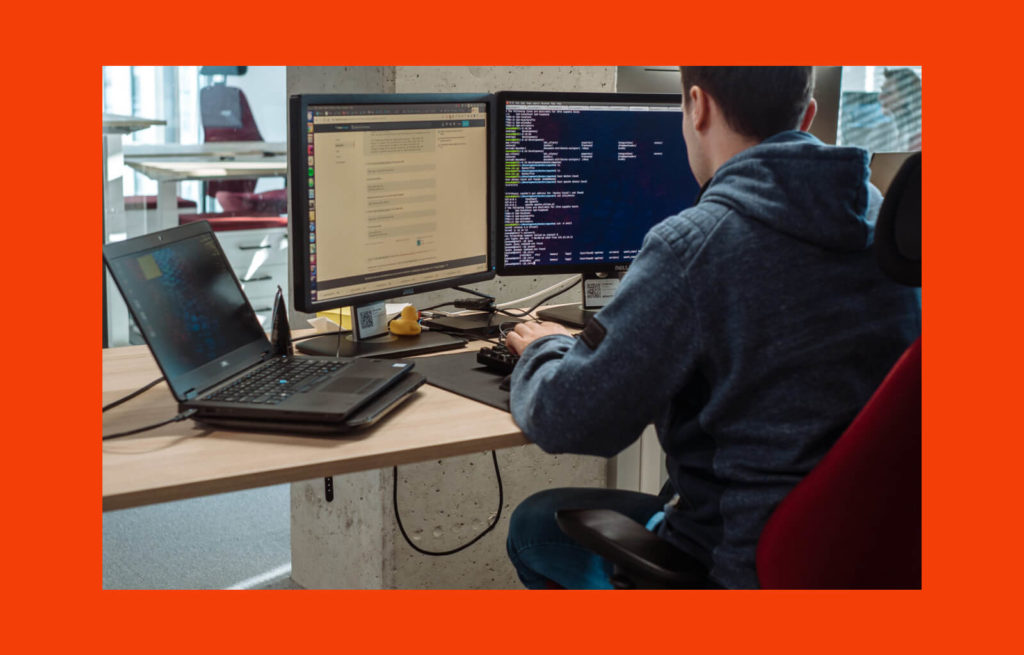Artificial Intelligence projects provide tangible business results
In the latest installment of the series about how we work at Spyrosoft, we’re introducing Tomasz Smolarczyk, our Head of AI. We’re discussing all things AI, including how he plans to collaborate with other teams and why he decided to focus on Data Science.
What was your career path to becoming Spyrosoft’s Head of AI?
I always enjoyed thinking about logical problems and mathematics. When I had to decide which studies to choose, I went for Computer Studies as they were – at least in my mind – associated with engineering skills and the practical use of analytical skills.
When I was in the second year of my studies, I started working as a software tester and that experience has taught me to pay attention to details. At the same time, we had data analytics and statistics classes at the university. I really liked these and that’s how I got an internship at a bank where I worked on a Big Data project.
The analyses we prepared were closely related to business and I wanted to know more about this aspect of the projects we worked on. I applied for postgraduate management studies with a structure that resembled that of an MBA. That’s also where I started to centre my professional career around Data Science as it’s at the intersection of business and technology domains. I’ve tried to expand my competencies in both areas.
After graduating, I was working as an intern at a large company where I built tools for predicting the demand for their products. From there I was employed at a consulting firm where I worked at the Marketing & Sales department on data analytics projects. I also had a chance to work for multiple customers from different industries and I got to know many Data Science methods that we applied to real-life business challenges. There was immense pressure to show how the analyses we complemented bring evident business value. That’s now something that’s taught at technical universities because classes are mostly focused on algorithms and technologies rather than how to combine these with business.
I also collaborated with an airplane and train manufacturer. We built a predictive maintenance tool for rail and underground traffic management systems. Before joining Spyrosoft, I also develop a Data Science strategy and a team at a healthcare startup where we worked on an early medical diagnostics system that, based on an interview with the patient, could determine their condition and how severe it is. This solution could help manage and automate patient flow at medical facilities.
Finally, I joined Spyrosoft where I’m Head of AI team. My role is focused on building these competencies within the company and on working on the clients’ projects.
When did you decide to focus solely on AI?
I really like approaching and solving new problems and each AI project is different. We have a chance to use the latest technologies and scientific advances that have been established in the last few years, and apply them to real-life business challenges. In one of the recent projects, based on a small data sample, we applied the latest pre-trained NLP models to build a text classification tool with transfer learning. Thanks to this solution, we’ve achieved high accuracy in a short amount of time. Additionally, AI provides an opportunity to prepare solutions that can scale in unique ways. A well-made AI model can solve a problem an infinite number of times, never getting tired nor losing the quality of the results. What’s more, if one creates a feedback loop for the model, it can become better and better with time.
What are your plans at Spyrosoft and how would you like to grow your team?
We are working on two ideas in parallel: the first one is the Community of Practice, the group of people who already have experience and AI and work on related projects. Within this community, we’ve been working on Machine Learning, AI, NLP and Data Science projects. We also want to develop the so-called Proofs of Concepts which will be our signature projects that we can show off our team’s competencies in front of potential and existing customers.
In addition to these projects, we’ve also been building the Community of Interest open to anyone at the company who’d like to meet with like-minded people and share what they know about AI with others. Once a month we also organise workshops where we discuss various aspects and knowledge areas of Machine Learning. During these meetups, we talk about projects we have completed for our clients, so we all can see practical uses of the technologies rather than focus exclusively on theory.
How is the AI team collaborating with other teams?
Our team has been closely collaborating with Business Units, we prepare client offerings and work on projects that fulfill our customers’ business needs. We want to show others that both AI and Machine Learning projects can have a commercial side to them and can bring evident business benefits. Here’s where we need close collaboration with business, understanding a broader context as well as the customer’s business operations which in turn, enable choosing a solution that will help to optimise these operations.
Technology plays a certain role here, but if it isn’t supported by changing and optimising the current operational mode, it will not bring any tangible results and these efforts go to waste. We also take care of the whole process to help prevent this from happening.
About the author
RECOMMENDED ARTICLES




